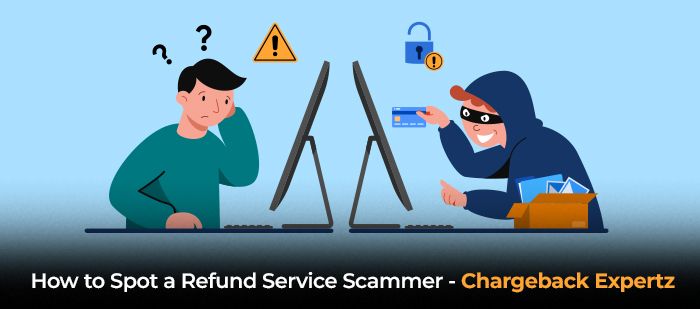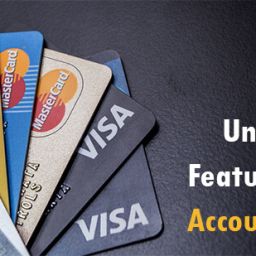
Are you considering using a Refund Services company to help you get back the money that you’re owed? It’s important to be aware that there are scammers out there who will take advantage of unsuspecting shoppers. In this blog post, we’ll be discussing how to spot a refund service scammer and the different techniques professional scammers use to commit second-party fraud.
The birth of the refund service scam
As online shopping has become increasingly popular, so too has the rise of scammers looking to take advantage of unsuspecting shoppers. One of the most common scams is known as the “refund service scam.” This type of scam involves a professional fraudster who sets up a fake website and promises shoppers refunds on their purchases if they transfer their money to a third-party account.
This type of fraud first appeared in the early 2000s. At the time, it was fairly uncommon and only a few cases were reported each year. But in recent years, the number of victims of this type of scam has increased dramatically. In 2020 alone, the Federal Trade Commission (FTC) reported over 6,000 complaints related to refund service scams.
The way that this type of scam works is that the scammers will set up a website with attractive offers, such as offering customers a full refund on their purchase if they transfer their money to a third-party account. The scammers will then ask for the customer’s payment information and once they have it, they will transfer the money to their own accounts. Unfortunately, once the money is gone, the customer will never get it back and won’t receive their promised refund.
How to refund service scammers operate
Refund service scammers are often professional criminals that are knowledgeable about the different methods of fraud and how to take advantage of online shoppers. They can use a variety of methods to scam unsuspecting shoppers, including using stolen credit cards, phishing emails, and fake websites.
One common method of scamming is known as “second-party fraud”. This involves the scammer posing as a legitimate business that provides a refund service for goods purchased online. The scammer will offer a full or partial refund for goods that have already been purchased, and will then request the shopper’s personal and financial information in order to process the refund. Once they have this information, they will use it to make fraudulent purchases or access the shopper’s bank accounts.
Another popular method used by scammers is phishing emails. These emails will appear to be from a legitimate company but will contain malicious links and attachments that, if clicked, can lead to the theft of personal information. Scammers also commonly use fake websites to lure unsuspecting shoppers into providing their credit card details. These sites usually look like the real thing but are often loaded with malicious software that can capture the shopper’s data.
In addition to these methods, scammers may also use stolen credit card numbers to purchase goods on behalf of shoppers and then offer them a refund for the goods. These scams are becoming increasingly difficult to spot due to the sophisticated methods being used by scammers. It is important that all shoppers remain vigilant when making purchases online and pay attention to any suspicious activity.
How to spot a refund service scammer
Refund service scams are becoming increasingly popular with online shoppers. The scammers use the promise of easy refunds to lure unsuspecting victims into paying for services they never receive. In some cases, shoppers may also be tricked into giving away personal or financial information. To avoid falling victim to these scams, there are several signs that indicate a fraudulent operation.
One of the first things to look out for is a company that requires upfront payment. Legitimate companies rarely demand payment before providing their services. It’s also important to make sure the company is properly registered with a government agency and that its contact information is accurate.
![]()
Email us anytime!
Email customer service 24/7
![]()
Call us anytime!
Reach customer care 24/7 at +1 (888) 901-8653
Another thing to watch out for is offers of easy and fast refunds. Scammers often promise refunds that are too good to be true, such as refunds on items that were never purchased. It’s also important to research the company online to make sure it has a good reputation. Avoid companies with numerous customer complaints and bad reviews.
Finally, look for warning signs such as vague language, suspicious guarantees, and requests for personal or financial information. Be aware of unsolicited emails and other forms of communication. Be especially cautious if you receive a call from someone who claims to work for the refund service. Scammers will often try to pressure their victims into making payments over the phone or entering credit card information.
By following these steps, you can protect yourself from falling victim to refund service scams. However, it’s always important to remain vigilant and keep an eye out for red flags. If something seems suspicious or too good to be true, it’s probably a scam.
Our Latest Blogs
- Amazon Vendor Chargebacks | Complete Guide
- Real Facts of Credit Card Chargebacks
- 8 Common Merchant Mistakes When Handling Chargebacks
- Top 5 Holiday Fraud Schemes You Need To Be Aware
What to do if you think you’ve been scammed
If you think you’ve been a victim of a refund service scam, it’s important to act quickly. Here are some steps to take:
- Contact the store where you made the purchase and explain what happened. If they’re willing to help, they may be able to resolve the issue without involving the police.
- File a complaint with the FTC or your local police department. They can help you determine if a criminal investigation is warranted and advise you on how to best protect yourself in the future.
- Monitor your credit report for any suspicious activity. This will help you spot any fraudulent purchases or accounts that have been opened in your name.
- Contact your bank or credit card company and ask them to reverse any charges associated with the fraud.
- Document all conversations with the scammers as well as any attempts to contact law enforcement or your bank or credit card company.
- Finally, consider sharing your story with friends, family, and colleagues so that others can learn from your experience. By spreading awareness, we can all work together to prevent fraud from happening in the first place.





